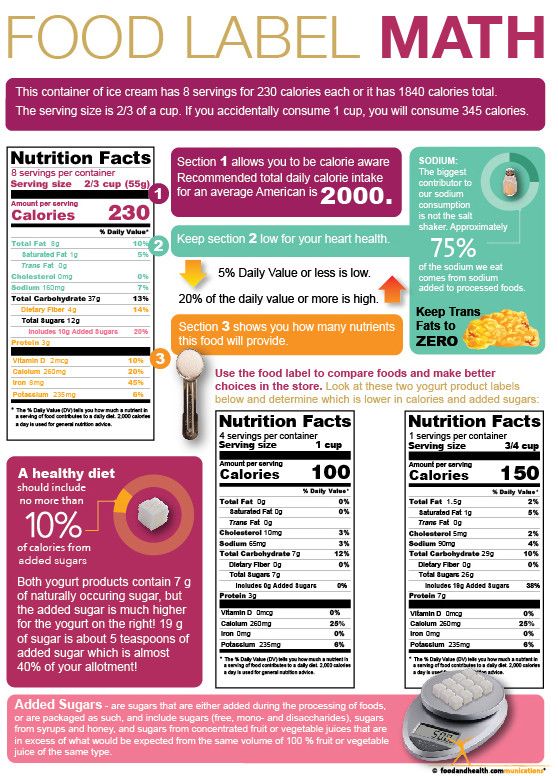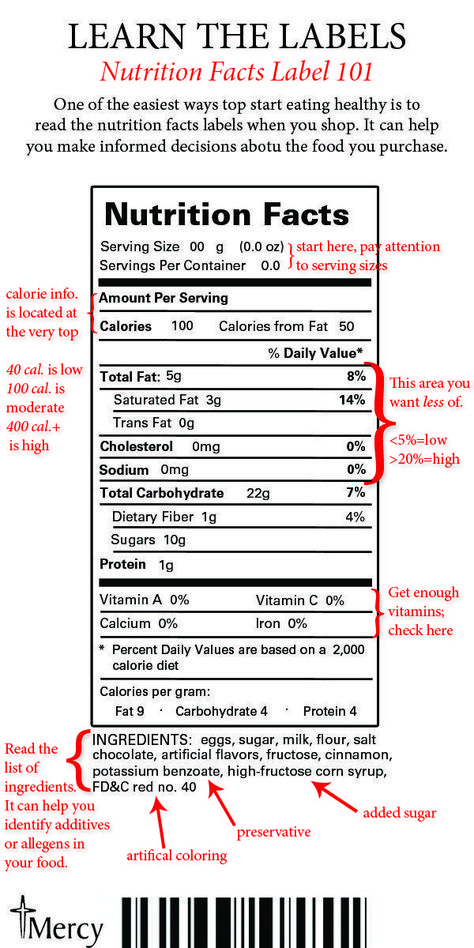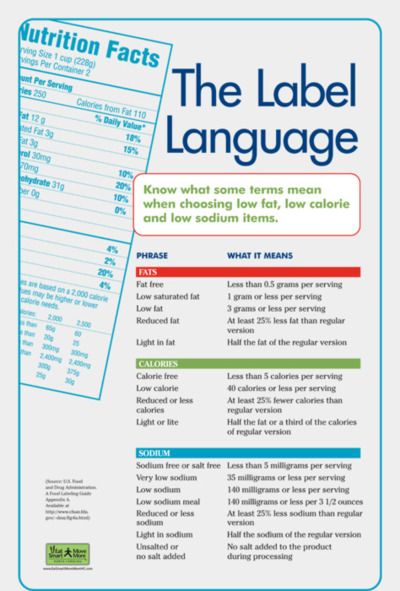In four of my recent articles, I mentioned that reading food labels was required reading in today’s world. One of those articles was: The Facts about Carbohydrates: Are They Really That Bad. But, why read food labels? Why are they important? What do they really tell us? The purpose of this article is to tell all about why read food labels.
What are food labels
Food labels, also known as Nutrition facts labels are labels required on most  packaged foods showing what nutrients are contained in the food within the package. They are used in many countries.
packaged foods showing what nutrients are contained in the food within the package. They are used in many countries.
Usually found on a panel found on a package of food, they contain a variety of information regarding the nutritional value of the food. There are numerous pieces of data that are standard on most food labels, which include serving size, number of calories, grams of fat, included nutrients, as well as a list of ingredients.
Why are food labels important
Food labels are important because they carry useful information to help make good choices about food. They will indicate if the food contains an additive that an individual might want to avoid. The nutritional information panel helps one to compare the nutrient profile of similar products and choose the one that suits their needs.
Reading food labels is one of the most important steps one can take to eating well and living healthy. Food labels provide important information about the food being consumed including: serving sizes, calories, fat, important nutrients, as well as salt, sugar, and cholesterol.
Reading food labels
Food labels provide more than just nutrition facts. They also tell you the ingredients.
All ingredients are required to be listed in descending order by weight,  including added water. Remember that:
including added water. Remember that:
- The ingredient listed first is represents the largest amount of that ingredient.
- The ingredient listed last the least amount of that ingredient.
Note: if an undesirable ingredient is listed first or close to the first, avoid that product.
An ingredient (other than an allergen or additive) is not required to be listed if it makes up less than five per cent of the food. Where there are very minute amounts of multi-component ingredients (less than five per cent), it’s permitted to list ‘composite’ ingredients only: as an example, it may say ‘chocolate’ (rather than cocoa, cocoa butter and sugar) in a choc chip ice cream.
But again, this does not apply to any additive or allergen. They must be listed no matter how minuscule the amount.
All food additives must have a specific use and they must be assessed and approved by the government. Food additives can be used to improve quality of a food or improve the flavor or appearance of a food. They must also be used in the lowest possible quantity that will achieve their purpose.
Food additives are identified in the ingredient list according to their class, which is followed by a chemical name or number. For example:
- emulsifier (lecithin)

- preservative (200)
- color (tartrazine)
- color (102)
This same food additive numbering system is used throughout the world. Vitamins and minerals are additionally listed under food additives.
The nutrition panel also indicates the quantity of various nutrients a food contains per serving, as well as per 100 g or 100 ml. It’s best to use the ‘per 100 g or 100 ml’ value to compare similar products, because the amount of 1‘serving’ may differ between manufacturers.
The nutrients are displayed in a format that is standard, providing amount per serve and per 100 g (or 100 ml if liquid).
The following are large amounts per 100 g:
- 30 g of sugars
- 20 g of fat
- 3 g of fiber
- 600 mg of sodium.
The following are small amounts per 100 g:
- 2 g of sugars
- 3 g of fat
- 0.5 g of fibre
- 20 mg sodium.
Size matters—It is important to observe the serving size of a product because the values only pertain to that service size; not the whole package. For example: a box of crackers labeled as low salt with a serving size of 5 crackers, the value is stated (e.g. 250 mg). But that is only for 5 crackers. If an individual consumes the entire box while watching a movie, it’s no longer low salt. If the box has 25 crackers, that’s 1250 mg of sodium (salt). That’s about half of the daily minimum requirement—on a snack! Not to mention that most boxes have more than 25 crackers! That doesn’t include all of the other sodium consumed during a day. Salt (sodium) is contained in so many of the products we consume.
Allergens on food labels
Food labels can help individuals with allergies or sensitivities to foods. The main ingredients that may cause severe adverse reactions must be stated on the label no matter how minute the amount.
Common foods which will cause allergies include peanuts, other nuts, seafood, fish, milk, gluten, eggs, soybeans.
Some labels may also state ‘may contain’ because there is a possibility that traces of an allergen may be present in a food unintentionally, such as food processed in the same plant or on the same equipment as products that contain nuts.
There must also be information to alert people of a possible health risk from some ingredients, for example, caffeine, aspartame, quinine, guarana, royal jelly, unpasteurized milk or egg.
Beware of claims on front labels
Front labels are a form of advertising and they don’t always tell the full story behind a product. Therefore, it is important to go to the back or side of a product to get the complete picture regarding ingredients and nutrition. Below are some examples.
- The term ‘light’ or ‘lite’ doesn’t automatically mean that the product is low in fat or energy. The term ‘light’ can refer to the texture, color or taste of
 the product. The aspect that makes the food ‘light’ must be stated on the label.
the product. The aspect that makes the food ‘light’ must be stated on the label. - The claims low cholesterol, no cholesterol, or cholesterol free on foods derived from plants, like margarine and oil, are meaningless because all plant foods contain virtually no cholesterol. But, some may be high in fat and will contribute to weight gain if used too generously.
- If an item claims to be 90% fat free, it actually contains 10% fat, but it looks healthier the other way.
- ‘Baked not fried’ sounds healthier, but it may still have just as much fat – verify the nutrition information panel to be sure.
- ‘Fresh’ can actually mean the product hasn’t been preserved by canning, freezing, high-temperature or chemical treatment. But, it may have been refrigerated and spent time in processing and transport.
Food labels are extremely import for revealing what is contained in the
foods we consume. It behooves us to observe them and respond accordingly by making educated decisions concerning our diets.
Please leave any questions, comments, or concerns below.
Good Health!!

Thanks for sharing that great info-chart. They have been standardized and there since ever, and not 10% of consumers use them. The interpretation of the label is not something everybody learns at school.
I almost die when reading about the 41 names for sugar xD. And the normative apparently recognize that Free may be more than zero. That’s why it is important to know the rules in order to understand the standards and the way they could affect us.
Yes Juan, isn’t that amazing! 41 names for sugar! However, we must be vigilant and pay attention for the sake of our health. Once we lose our health, we’ve lost it all.
Thanks for commenting!
There’s so much valuable information contained in your article and a few areas that have raised an eyebrow, for me anyway. Obviously, having made us aware of the forty one names for sugar. That did leave me reeling a bit. I can recognise a good few but some I had never heard of.
In saying that, I was surprised at my ignorance, for the most part because my wife is diabetic. We both are constantly reading the labels. This is definitely the case when we are trying out new foods. First look is for how many grams are listed next to ‘Sugars’. Another big one, that I think is overlooked by many, is the salt content. Our body relies on a very specific balance when it comes to salt intake, too much can cause illness and worse.
All that aside, I was interested to see the list of ingredients that are classed as possible ‘allergens’. Some of these are part of the basic food groups, yet as a species we are becoming allergic to them. I have no nutritional backgroud but it does strike me as odd. Maybe because we are evolving into a species that eats too much of the processed type of foods. I’d be interested to see if there was some research in that area or if I’m off the mark completely.
Yes Twack, we definitely eat too much processed foods and in some cases the body reacts. We are what we eat!
Thanks for commenting!